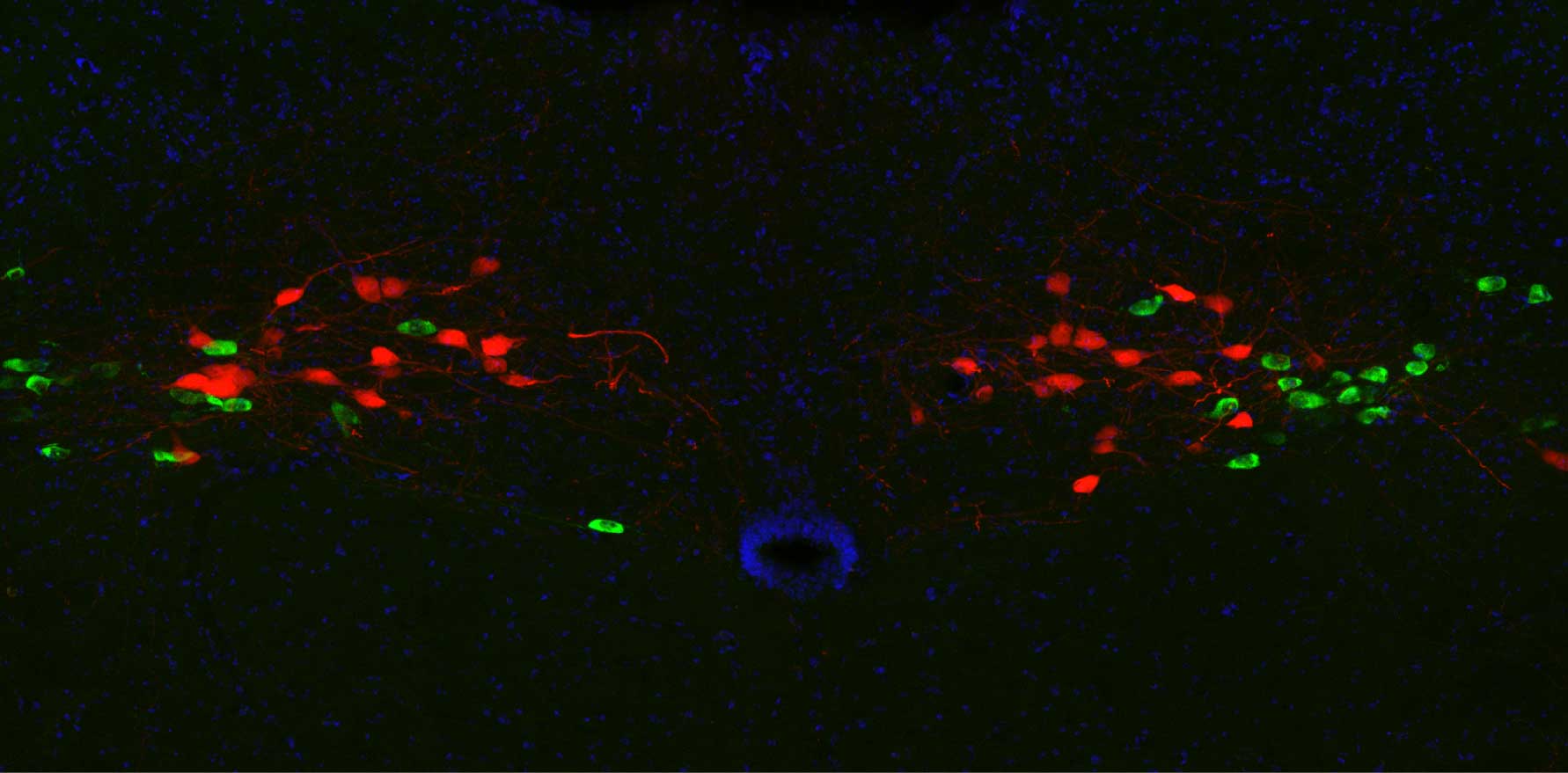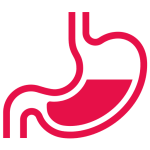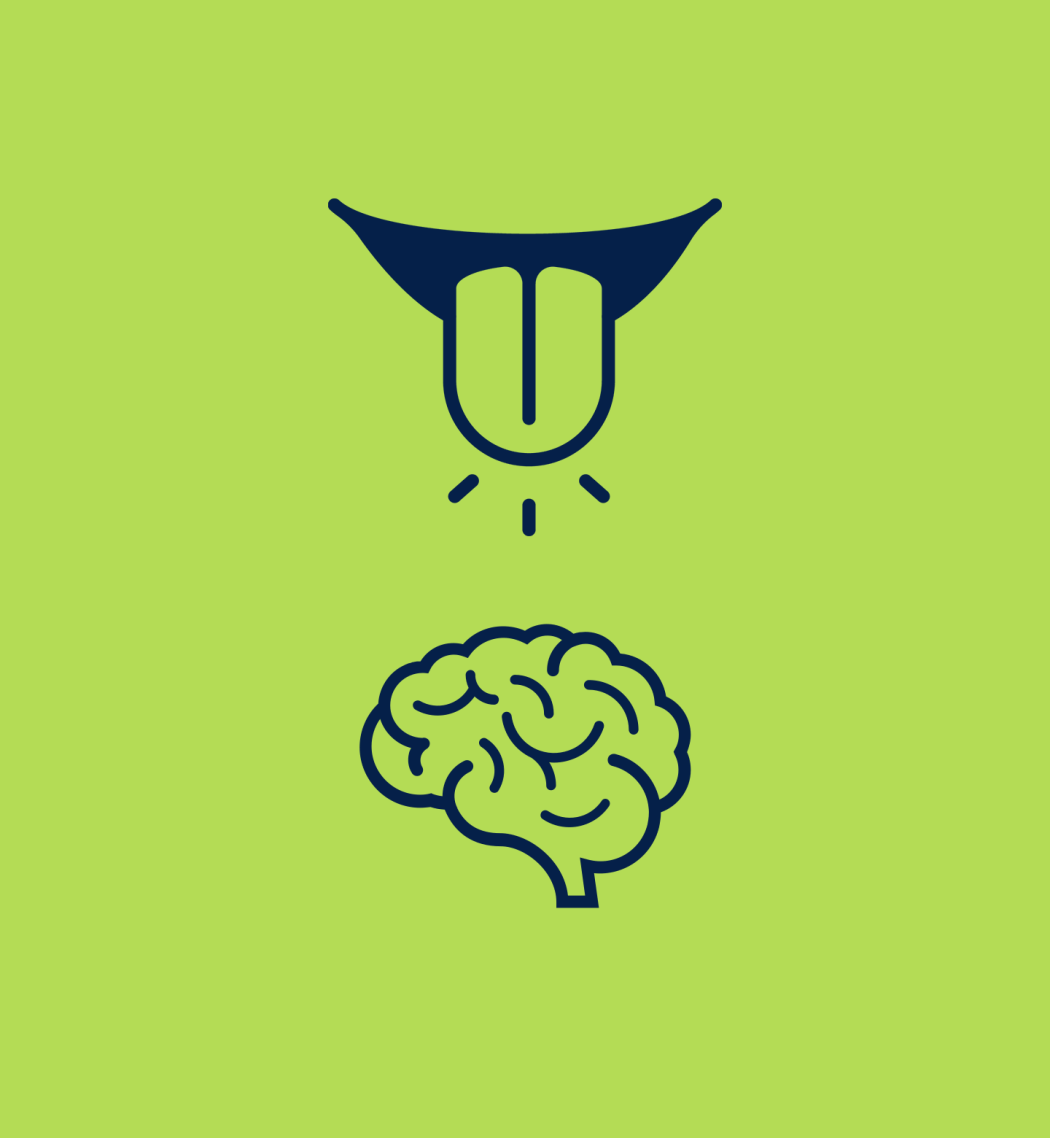When you eagerly dig into a long-awaited dinner, signals from your stomach to your brain keep you from eating so much you’ll regret it — or so it’s been thought. That theory had never really been directly tested until a team of scientists at UC San Francisco recently took up the question.
The picture, it turns out, is a little different.
The team, led by Zachary Knight, PhD, a UCSF professor of physiology in the Kavli Institute for Fundamental Neuroscience, discovered that it’s our sense of taste that pulls us back from the brink of food inhalation on a hungry day. Stimulated by the perception of flavor, a set of neurons — a type of brain cell — leaps to attention almost immediately to curtail our food intake.
One is using taste to slow things down and anticipate what’s coming. The other is using a gut signal to say, ‘This is how much I really ate. Ok, I’m full now!’”
“We’ve uncovered a logic the brainstem uses to control how fast and how much we eat, using two different kinds of signals, one coming from the mouth, and one coming much later from the gut,” said Knight, who is also an investigator with the Howard Hughes Medical Institute and a member of the UCSF Weill Institute for Neurosciences. “This discovery gives us a new framework for understanding how we control our eating.”
The study, which appears Nov. 22, 2023 in Nature, could help reveal exactly how weight-loss drugs like Ozempic work, and how to make them more effective.
New views into the brainstem
Pavlov proposed over a century ago that the sight, smell and taste of food are important for regulating digestion. More recent studies in the 1970s and 1980s have also suggested that the taste of food may restrain how fast we eat, but it’s been impossible to study the relevant brain activity during eating because the brain cells that control this process are located deep in the brainstem, making them hard to access or record in an animal that’s awake.
Over the years, the idea had been forgotten, Knight said.
New techniques developed by lead author Truong Ly, PhD, a graduate student in Knight’s lab, allowed for the first-ever imaging and recording of a brainstem structure critical for feeling full, called the nucleus of the solitary tract, or NTS, in an awake, active mouse. He used those techniques to look at two types of brain cells that have been known for decades to have a role in food intake.
The team found that when they put food directly into the mouse’s stomach, brain cells called PRLH (for prolactin-releasing hormone) were activated by nutrient signals sent from the GI tract, in line with traditional thinking and the results of prior studies.
However, when they allowed the mice to eat the food as they normally would, those signals from the gut didn’t show up. Instead, the PRLH brain cells switched to a new activity pattern that was entirely controlled by signals from the mouth.
“It was a total surprise that these cells were activated by the perception of taste,” said Ly. “It shows that there are other components of the appetite-control system that we should be thinking about.”

PRLH neurons (green) respond to signals generated from tasting food, and slow down the pace of eating.

GCG neurons (red) respond to signals from the GI tract and provide the feeling of being full.


PRLH neurons (green) respond to signals generated from tasting food, and slow down the pace of eating.

GCG neurons (red) respond to signals from the GI tract and provide the feeling of being full.
While it may seem counterintuitive for our brains to slow eating when we’re hungry, the brain is actually using the taste of food in two different ways at the same time. One part is saying, “This tastes good, eat more,” and another part is watching how fast you’re eating and saying, “Slow down or you’re going to be sick.”
“The balance between those is how fast you eat,” said Knight.
The activity of the PRLH neurons seems to affect how palatable the mice found the food, Ly said. That meshes with our human experience that food is less appetizing once you’ve had your fill of it.
Brain cells that inspire weight-loss drugs
The PRLH-neuron-induced slowdown also makes sense in terms of timing. The taste of food triggers these neurons to switch their activity in seconds, from keeping tabs on the gut to responding to signals from the mouth.
Meanwhile, it takes many minutes for a different group of cells, called GCG neurons, to begin responding to signals from the stomach and intestines. These brain cells act over much slower time scales – tens of minutes — and can hold back hunger for a much longer period of time.
“Together, these two sets of neurons create a feed-forward, feed-back loop,” said Knight. “One is using taste to slow things down and anticipate what’s coming. The other is using a gut signal to say, ‘This is how much I really ate. Ok, I’m full now!’”
The GCG brain cells’ response to stretch signals from the gut is to release GLP-1, the hormone mimicked in Ozempic, Wegovy and other new weight-loss drugs.
These drugs act on the same region of the brainstem that Ly’s technology has finally allowed researchers to study. “Now we have a way of teasing apart what’s happening in the brain that makes these drugs work,” he said.
A deeper understanding of how signals from different parts of the body control appetite would open doors to designing weight-loss regimens designed for the individual ways people eat by optimizing how the signals from the two sets of brain cells interact, the researchers said.
The team plans to investigate those interactions, seeking to better understand how taste signals from food interact with feedback from the gut to suppress our appetite during a meal.
Co-authors: Nilla Sivakumar, Zhengya Liu, Naz Dundar, Brooke C. Jarvie, Anagh Ravi, Olivia K. Barnhill and Heeun Jang of UCSF and Jun Y. Oh, Sarah Shehata, Naymalis La Santa Medina, Heidi Huang, Wendy Fang, Chris Barnes, Chelsea Li, Grace R. Lee and Jaewon Choi of HHMI.
Funding: This work was supported by NIH grants (R01-DK106399, F31DK137586).
